- About Us
- Columns
- Letters
- Cartoons
- The Udder Limits
- Archives
- Ezy Reading Archive
- 2024 Cud Archives
- 2023 Cud Archives
- 2022 Cud Archives
- 2021 Cud Archives
- 2020 Cud Archives
- 2015-2019
- 2010-2014
- 2004-2009
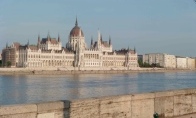 |
June 2011 - Cycling the Danube |
Half a lifetime ago a history teacher introduced me to the Iron Chancellor - Otto von Bismarck and his view that the great questions of the day were decided by "blood and iron." This introduction was significant, not only for cultivating the occasional fascist view of European politics, but also for a fascination with Mitteleuropa’s empires – Romans, Byzantines, Ottomans, Habsburgs and the river that runs through the heart of it all - the Danube. Now half a lifetime later, having spent a month cycling the Danube from source to sea, the senses were often overwhelmed - not just by modern day Europe, but just as powerfully by Mitteleuropa’s rich past.
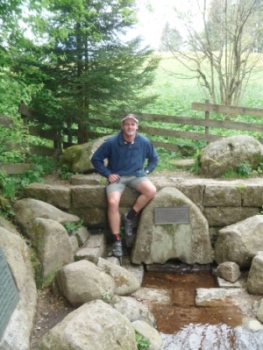
The Donauquelle – a hillside spring and source of the Danube River
Though not the longest river in Europe (Russia's Volga claims that title, as it does for Europe's highest peak and 'best' female tennis players), the Danube is its heart - running through eight countries, forming borders with others and hosting four capital cities. It has fashioned gorges – foremost the Iron Gates, where the river scythes through the Carpathians, floodplain, delta and quiet flowing reaches. It has witnessed empires, battles and the history of Europe. In turn it has been fashioned into dams, locks, weirs, the Black Sea Canal, hydroelectric power supply, trans-European transport route (and cruise ship thoroughfare), it acts as an industrial drain, a source of water for agriculture, drinking water and beer production - with a brewery on the banks of the self-proclaimed (if not actual) source at Donaueschingen.
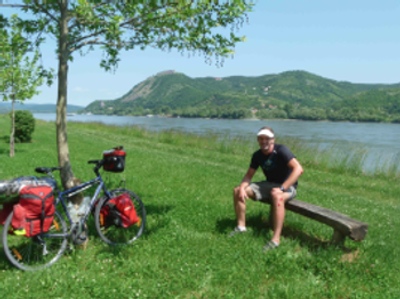
A few grazes at Visegrad – the Danube Bend / Elbow in Hungary
As for the senses, colours are inevitably associated with this journey - from the Black Forest where the Blue Danube rises, through the lush Green European springtime, through former Red communist countries to the Black Sea. The tastes of Hungarian tokay, paprika museums, pork knuckles, Slovakian goulash, dumplings, Black Sea sturgeon, Bavarian beers (well, beers in every country)… The smells of Austrian dairy yards, Romanian heavy industry, the fluff of poplars, Belgrade traffic fumes… The sounds of Bach's Toccata and Fugue bellowing from the largest pipe organ in Europe in Passau’s Dom St. Stephan, the bird calls of the Danube Delta, the rumble of river boats against the current (borne back ceaselessly), the grind of bike gears, the rattle of pannier bags over cobblestone roads…
As with any meandering travels like this, there are always the surprises too: drinking dark beers at 10.30 in the morning in the Weltenburg Monastery (a recipe that the Benedictine monks have perfected over centuries), training with the Austrian touch football team in Vienna (on their way to the World Cup in Edinburgh in late June), being given a brand new pair of (oversized women’s) Italian bike pants by a woman at a roadside café in Romania (who refused to accept anything in return) and the lingerie-clad beauty, waving me down on the side of the road in a long stretch of remote Bulgarian forest (who clearly wouldn’t have refused to accept anything in return).
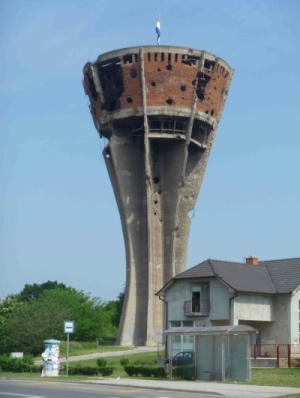
Vukovar’s water tower – a lasting reminder of Balkan conflict.
And so, the senses were dizzyingly overwhelmed each day - no doubt assisted by long, solitary, reflective hours in the saddle, typically with a calming lunchtime beer. But it is the layered social (predominantly military) history - not so easy to sense directly (often unseen) that truly overpowers the Danubian wanderer - and it is often more tiring and challenging than the distances on the road. Every day my path along the river revealed some hint of grand armies and their leaders: Marcus Aurelius (not just of Ridley Scott’s Gladiator fame), Charlemagne, Richard the Lionheart (whose two-year long capture in a riverside castle in Durnstein would have been far more pleasant in the modern day – now the heart of Austria’s famous Wachau wine), Suleiman the Magnificent, Napoleon, Hitler and Stalin.
Interestingly, every small Romanian farming town with a solitary (predominantly EU-funded) paved main road had a statue commemorating its fallen in WWI, sometimes WWII, and occasionally even the 1989 revolution - something strikingly reminiscent of small country towns in Australia - but not seen in other countries along the river.
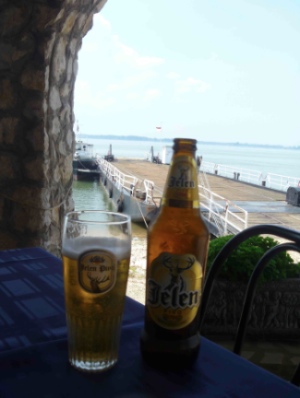
Lunchtime beer in Serbia, looking across to Romania.
Some of the reminders were more confronting and apparent, none more so than the Croatian town of Vukovar - heavily bombed in the 1990’s and still struggling to repair devastated buildings, let alone the forests nearby with landmine warnings. Coincidentally while I was in Serbia in late May, the wounds of that recent Balkan conflict re-opened with the capture of Bosnian Serbian military leader Radko Mladic (a fugitive for the past decade).
Amid the bloodshed, there was my own limited contribution - coming off the bike twice in the whole journey, both on the same day in fact (the second time in the middle of peak hour Budapest traffic).
Perhaps now, after all the besieged castles, battle monuments, opulent churches, bombed Balkan villages, the crumbling Communist concrete (monuments to other aspirations) - the more recent central European blood (shed) and iron (curtain) of my youth (Honecker, Tito, Ceausescu, Milosevic) make more sense to me. But perhaps there isn't always sense to be made of such things?
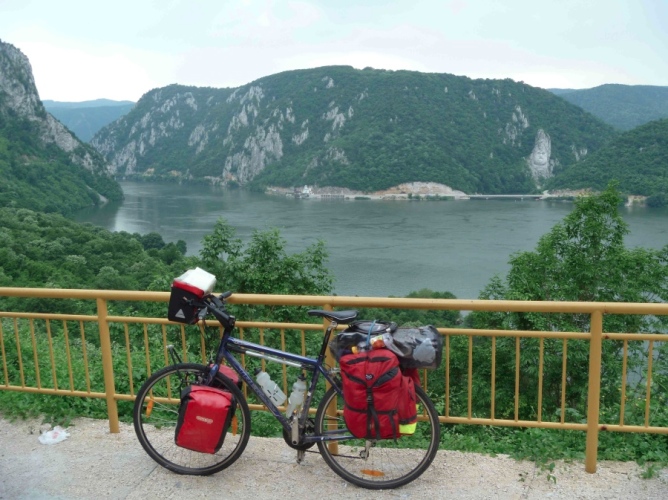
Coming out of the Iron Gates Gorge, with rock carving of the Emperor Trajan on the far bank.
So… to Hungary (and thirst) - the heart of the river in the heart of Europe, and its capital Budapest - the jewel of this trip. It is a beautiful city in a fascinating country, in the mid point of the river's course (a diversion south, having flowed east through Germany, Austria and Slovakia, before turning east again through Croatia, Serbia, Romania and Bulgaria). More than any other city, Budapest offered the Danube's human story - in all its glory and futility. A site for the Celts, Romans, Magyars, Mongols, Habsburgs, Ottomans, Nazis, Soviets ... perhaps part of the EU to come (which would certainly avoid further currency blunders with the Hungarian Florint). A place to quench a cyclist’s thirst, with beautiful bars and company at every turn. Hungary also had the greatest concentration of K1 paddlers and rowing boats on the Danube - further entrenching its primacy within the Basin in my view.
As for the facts - not to suggest that the tale so far has been anything but:
-There were 24 full days of riding over four weeks in May.
-In the absence of a cycle computer, the trip was more or less 3000kms. There is some debate about where the Danube starts, even debate about where it finishes, but in any event the route didn't always follow the banks - sometimes shortening the distance, sometimes lengthening it.
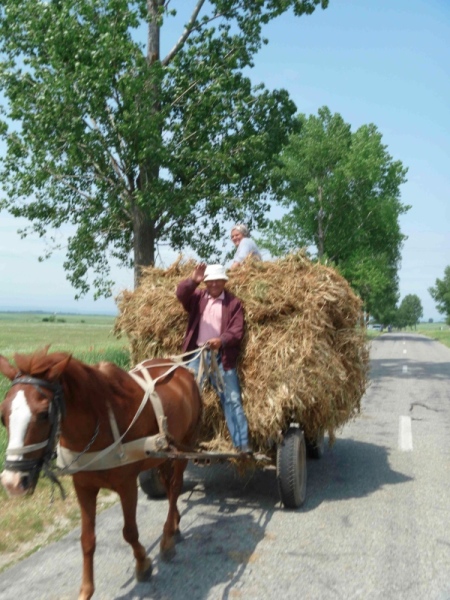
Road transport Romanian-style.
-The last 1000kms through the rolling farmland hills of Romania were pushing into a constant easterly headwind (with an increasingly buckled rear wheel), which made for longer days in which to wave at leathery faced farmers, high-five young children, and race horses and carts along quite country roads (one did overtake me uphill once, but I caught them on the downhill ...).
-There were also planned detours to castles and sites of miracles at hill top basilicas, and then the unplanned detours where maps, road signs and road works didn't necessarily align.
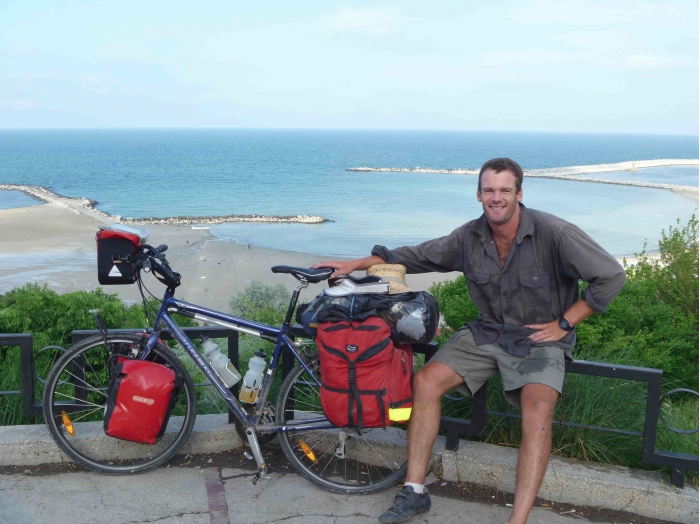
Reaching the Black Sea at Constanca – four weeks on from the Donauquelle.
-Directions weren't such an issue though – so long as there was a big river nearby and I was going the same direction as the current, I could ride on reasonably assured. Further downstream (Serbia and Romania in particular) there were even more clues, with massive smoke belching industrial towns on the horizon acting as signposts to the Danube.
-On average I hummed along at about 20kms an hour on the 400 Euro Trek touring bike that I bought in Berlin, burdened by 30kg of (mainly unused luggage) in front, back and handlebar pannier bags. (Mind you, I wasn’t weighed down by a first aid kit, or helmet – both of which will probably feature in any future undertakings).
-The longest day of the ride was 170kms (into that Romanian headwind I mentioned), but it also ended with the cheapest beers - 1 Lei (about 33 cents in Australia) and the cheapest barbecued sausages in a small country town's annual festival weekend (I think they were sausages).
-The shortest was 50kms when, feeling poorly I almost hurled from the world's tallest cathedral spire in Ulm (almost the world’s highest spewer).
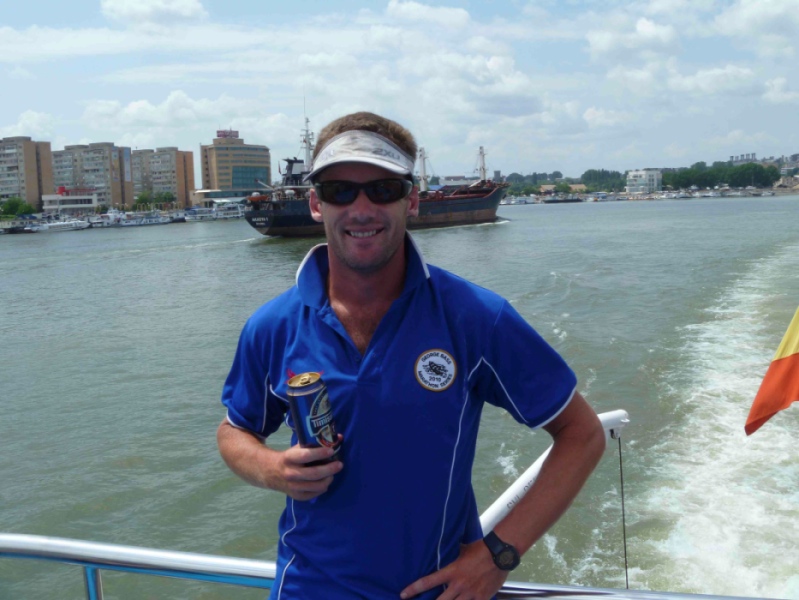
The Danube Delta by boat, leaving the bike behind.
-The weather was fine (apparently central Europe enjoyed an unseasonably warm and dry May) for all but one day of heavy rain in Vienna, when I was happily ensconced in the Sigmund Freud Museum - it probably would have been a Freudian Slippery Route that day anyway ... .
-The bike pump only came out twice for flat tyres (the second only an agonising 15kms from the Black Sea), but being handily wedged on the bike frame, it came out half a dozen times for high-speed jousts with particularly unfriendly Romanian dogs.
-And finally, the tent and sleeping bag only came out of the front pannier bags once, on a quiet grassy bank in Germany (perhaps to legitimise carrying their weight across Europe). They were no contest with European pensions, guesthouses, even an antique-furnished, old town apartment in the middle of Bratislava for 25 Euros, which was still partying after hosting a Finnish victory in the Ice Hockey World Cup.
At the end of it all, the history of the river, the cultures, the people, could all take a lifetime to comprehend – stopping at every site along the banks (and I had waited half a lifetime to ride through it). Perhaps the most consistent companion for the wanderings – aside from an evening beer while writing the day’s travel tales – was the red poppy. Often considered a symbol of wartime remembrance, it will remain an appropriate lifelong reminder for me of a beautiful, solitary springtime spent cycling the Danube … a month of blood, iron, Hungary and thirst.
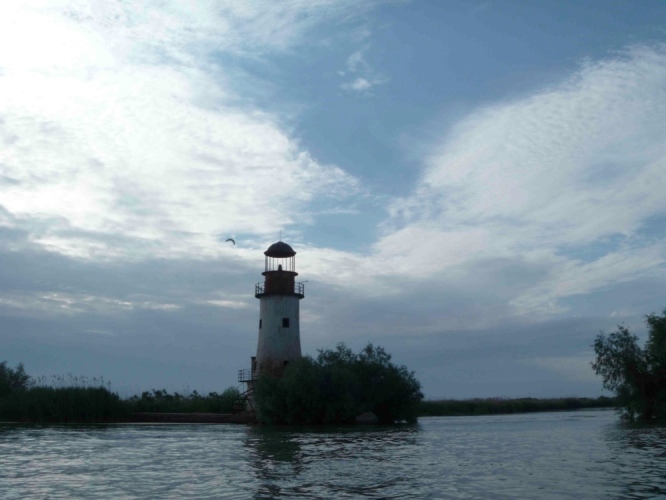
The Black Sea Lighthouse at Sulina.
POSTSCRIPT:
More than any other travels that I've wandered on, this journey was enriched and perhaps pressured by the wonderful writing of others who'd followed this path before. Most notably Patrick Leigh Fermor (who died on 10 June 2011 within days of me finishing the ride), who walked the Danube in the 1930's and then wrote about it in the 1960's in A Time of Gifts and Between the Woods and the Water. More recently, A J McKinnon’s The Unlikely Voyage of Jack de Crow described his sailing trip down the river.
While these great tales had been ‘preparatory reading’ and stayed at home, the saddle bags were nonetheless weighed down with a number of other tomes (all of which saw far more use than the camping gear). Italian writer Claudio Magris wrote Danube - A Sentimental Journey From Source To Sea in the Cold War 1980's carrying with him an impossible wealth of European history, philosophy and literature. More recent and practical guidance came from Andrew Beattie’s The Danube, A Cultural History, while four books of maps produced by Bikeline (a German cycling organisation) provided the more practical directions.
Over the years, Wilf has written for the Cud on numerous occasions, ocean paddling in Hawaii, sailing Australia's Arnhem Land, kayaking in Alaska, mountaineering in Russia, trekking across South America, cycling from Canada to Mexico and, in 2009, kayaking Australia's Murray River.
